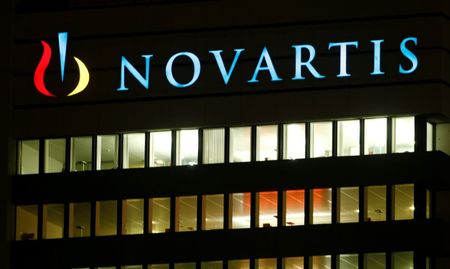Novartis upgrades sales forecast
2024.11.21 05:37

Investing.com — Novartis (SIX:) has raised its growth guidance, indicating optimism about its mid-term performance, even as questions about longer-term sustainability persist.
The pharmaceutical company has upgraded its 2023-2028 CAGR sales guidance to 6%, surpassing the previous target of 5%, and issued a new 2024-2029 guidance at 5%, which is higher than the consensus estimate of 3%.
“In general, we see the updates as in-line with both our own and investor expectations,” said analysts at Barclays (LON:) in a note.
These adjustments imply that Novartis expects its 2028 and 2029 sales to exceed consensus by approximately 7% and 11%, respectively.
Analysts at BofA Securities noted that while these upgrades align more closely with their optimistic projections, market skepticism remains about the company’s ability to sustain growth post-2029.
Key drivers behind Novartis’ updated outlook include strengthened expectations for several products. Sales forecasts for Kisqali and Kesimpta, both estimated to surpass $8 billion and $6 billion, respectively.
Similarly, Pluvicto and Leqvio are projected to report over $5 billion and $4 billion in peak sales, with major contributions expected from the broader pipeline.
Despite the optimistic mid-term outlook, challenges loom on the horizon. Patent expiration risks for Kisqali (expected by 2031) and Kesimpta (2030-2032) are anticipated to pose headwinds.
Additionally, questions about margin stability beyond 2028 remain unanswered, as the company continues to target a core operating income margin above 40% through 2027.
Analysts flagged this as a critical point of scrutiny, particularly as competition intensifies and more cost-effective biosimilar alternatives enter the market.
Novartis’ guidance revisions are underpinned by its capital allocation strategy, which includes organic investments, dividends, share buybacks, and bolt-on acquisitions.
However, BofA Securities analysts maintain a neutral stance, citing limited near-term catalysts to drive earnings outperformance.
They flagged potential risks such as Kisqali’s ongoing patent litigation and a lack of major late-stage pipeline breakthroughs as factors constraining the company’s valuation.








